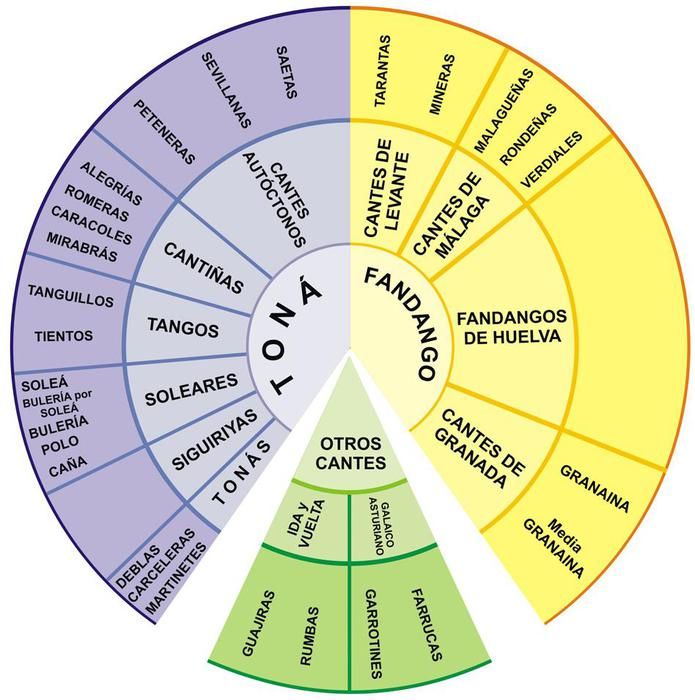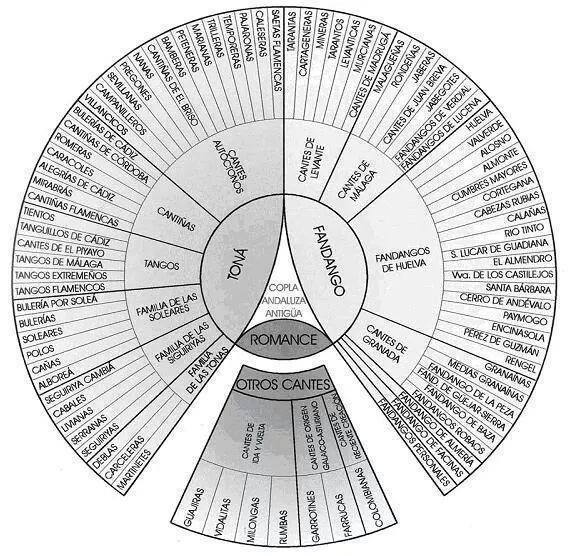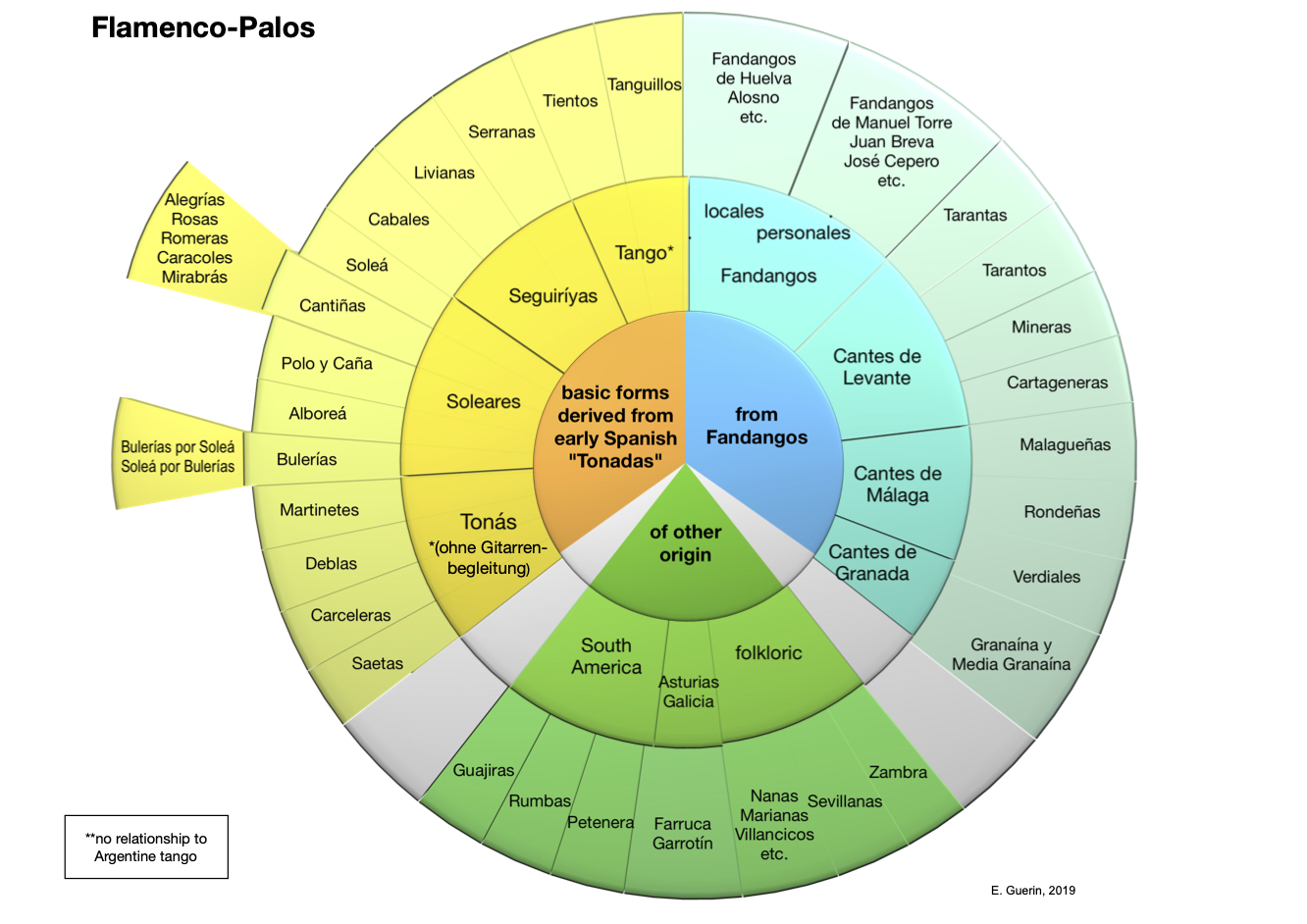|
Ricardo -> RE: Relationship / origin of palos (Nov. 7 2019 12:55:03)
|
quote:
ORIGINAL: Beni2
quote:
So I would actually scratch that jota deal (never convinced me anyway), and make a third branch of Fandangos, starting with fandango de Cadiz with compas treatment of solea taking over as the other melodies evolve into the various Cantiñas forms. Even caracoles has some obvious fandango elements preserved in its melody, and it’s the unique one in the family that resolves to phrygian. So I would also throw that one back in there.
Hi Ricardo. Does the Fandango de Cadiz melody predate recording technology? Do the Cantinas melodies fit because their meter is similar? Which Fandango melody specifically serves as the root and for which alegrias melody (some begin on a different scale degree and have a different tessitura)?
I agree that you should publish because scholarly articles tend to be written by scholar NON-practitioners, although that is beginning to change. You should also send anything to scholar-practitioners for review. A few people with scholarly and flamenco backgrounds come to mind if you decide you have the time.
Interesting stuff.
Fandangos de Cadiz
http://www.flamencopolis.com/archives/264
This is just one example but I am not convinced of a connection. Researching...
So the description I read was talking about a reference to this fandango in the year 1785, obviously before recordings. The point of the article was that an aficionado discovered some people near Sevilla were singing it and claimed to have preserved it, and his observation was that it sounded similar to Alegrias of today. Not clear WHAT they were singing and whether the example given on that site is the exact same melody or not. But all that is beside the point that several Cantiñas melodies CAN fit the Fandango FORM with minor alterations. For example, Camaron famous letras:
Aunque pongan en tu puerta (G-C)
Cañones de Artilleria....now here the melody drops down to B natural. If you replace the ONE NOTE with what the fandango de Cadiz does (Bb-A), but keep the ENTIRE REST OF THE MELODY UN TOUCHED, it’s a perfect second line resolution to F major.
Aunque pongan en tu puerta (G-C)
Tengo que pasar por esto (C-G)
Aunque me Cuesta La vida (G-C)
Tengo que pasar por esto, Aunque me Cue... (C-F)
(Cue)sta La vida (F-E)
I understand the lyrics are not functioning like Fandango, but please note that except for ONE NOTE in the second line, the melody notes and phrasing/timing can work completely unchanged when we replace alegrias chords with fandango chords, outlining the structure underneath the melody.
The other melody you know of alegrias that instead starts on tonic (C) and drops down (to G), actually functions totally un changed as the final melodic note of the Second line and 4th line are both F natural, meaning the first time you play F chord, second time the G7, and the final resolve which repeats lyrically, again, you see drops to E natural, meaning the first time is G-C chords, then the last time your F-E resolution just like fandangos, and the example above.
Playing around with other melodies, buleria de cadiz, the colatilla, etc, you can see similar ways of bringing in the fandango harmonic structure underneath the melody. Of course some are way more of a stretch than others, but my point is that unlike Solea melodies or Siguiriyas melodies, these songs in the major key seem to have evolved OUT of the fandango form type phrasing. I think the first thing to happen was probably the second sung line that pulls to F major was replaced by G7 (already we see some fandango based melodies doing this such as Jabera), and finally some guitar player didn’t bother to resolve to E for the final phrase and went back to C because it still harmonized just as many fandangos do going back to C despite the voice singing E. I would think later the melodies such as buleria de Cadiz or tir tir tran tran type melodies reflected this as well by dropping down below E to C for the resolutions.
Again please note that Caracolos is a closer fit to fandango form as you have your “cafe de union.....Tato y Juan Leon” phrase which is almost exactly your C7-F, F-E conclusion of Fandango. Back to your Fandango de Cadiz example, you can hear the “como reluces....te queiro yo...” note for note melodic phrases in there. Again, I wouldn’t want to go through note by note to try and match up what came from where because after all it’s just 7 notes getting mixed around and of course you will find totally unrelated exact phrases. I am more concerned about the over all general structure here and how these songs get lumped together and categorized for the sake of learning.
|
|
|
|




